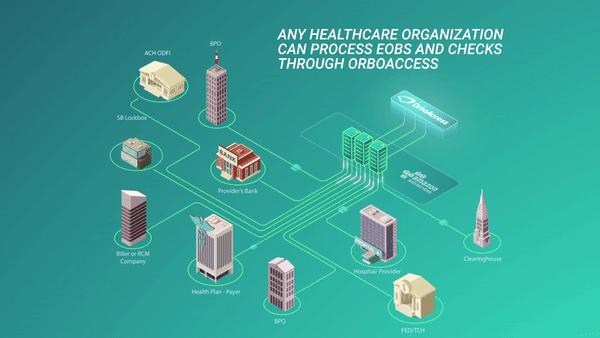Key Considerations for Optimizing Technologies for RCM
There are a plethora of technologies and technology companies in the market providing myriad products and services to help optimize RCM for healthcare. However, aligning these technologies to meet the needs of RCM is crucial for healthcare organizations and RCM servicers.
Healthcare IT News brought together five revenue cycle technology experts to offer their perspective on strategies and best practices for getting the most out of RCM systems.
The contributors include:
- Juli Forde, ZOLL Data Systems
- Michael Ochs, Experian Health
- Geneva Schlabach, Vispa
- Ron Wince, Myndshft Technologies
- Brian Robertson, founder and CEO, VisiQuate

Key Considerations for RCM
According to Juli Forde of ZOLL Data Systems, "Innovation is providing solutions to eliminate manual processes and reduce the labor costs required to submit a clean claim and receive timely reimbursement." However, Forde cautions CIOs to keep a keen eye on the interoperability of the technology solutions to realize their maximum efficiency and benefits.
“An innovative product may include the unique solution to a problem. However, without true interoperability, that product may fall short of ROI projections and cause costly delays in both productivity and reimbursement.”
In addition to interoperability, Forde suggests that every revenue cycle organization should select a core solution that can be used to its maximum capability. Finding a core solution that meets the highest number of needs with optimal efficiencies will streamline workflow and improve reimbursement.
Forde adds that "failure to select the right foundation will cause downstream consequences for years to come. A successful CIO is ever mindful of the impact to their technology foundation when considering adding new applications."
Michael Ochs of Experian Health provides insight on what to look for when evaluating new technologies.
“Certainly, there is consideration to using best-in-class products for each particular need and patching them together,” he said. “But now there are vendors that offer a suite of products that work seamlessly together, which may be a better overall benefit as the data can flow seamlessly from workflow to workflow.”
Ochs offers a few things to consider in the ecosystem that an organization’s revenue cycle management process might be missing or have misaligned:
- Clear and convenient processes for both providers and patients.
- Accurate patient identification from registration to billing.
- Streamlined workflows to reduce time and resources spent on avoidable tasks.
- Automated processes to support effective collections and spot the root causes of denials.
- Real-time reporting to help improve performance over time.
Brian Robertson, founder and CEO of VisiQuate, offers another RCM tech-optimization best practice: Overinvest in the why, and business-problem analysis, versus the how and the what. Robertson recommends that business problem analysis is always king. People remain the most important asset to optimize something as complex as the healthcare revenue cycle, he advised. Technologies, tools, methods and techniques are all secondary to having a clear picture of why it is important or necessary to optimize the revenue cycle, he said.
Geneva Schlabach of Vispa provides an interesting perspective to revenue cycle workers working in remote environments. We have touched upon this topic recently in an article regarding business continuity planning, but Schlabach adds:
“Tracking revenue cycle workers, whether on-site or remote, is a necessity among healthcare provider organizations. Through this pandemic, provider organizations have seen the importance of being flexible with staff while using technology to track and monitor the efficiency and effectiveness of their remote teams.”
In conjunction to tracking remote revenue cycle workers, Ron Wince of Myndshft Technologies adds that it’s very hard to manage processes that happen in cubicles or – more recently – done remotely.
“In today’s environment, it’s not always affordable to upgrade or update technology,” he noted. “Simpler things like taking more advantage of data or simple scripting can help companies squeeze more juice from the tech stacks they have in place.”
Wince recommends healthcare organizations take a look at their current technologies and customize them to better fit the overall workflow and processes.
"There are not a lot of opportunities to customize the technology and it relies on the people doing the processes to figure out workarounds to get what they need out of the portfolio of solutions."
The best organizations have recognized this as a challenge for running efficient operations, he insisted. They are leaning into some off-the-shelf tools like robotic process automation, macros and scripts, and even building simple no-code desktop or web applications that can help minimize the amount of task switching that takes place, he noted.
“These can improve productivity by 15% to 20% just by allowing for more consistent workflows,” he said. “New employees can come up to speed faster and turnaround time is better.”
Another best practice for optimization is putting in place a smooth end-to-end automated process that helps patients understand their financial responsibility and pay for their care easily, said Ochs of Experian Health.
When the financial experience is transparent and frictionless, patients are more likely to feel satisfied and less likely to shop around for care – not to mention being better prepared to meet payment deadlines, he added.
Reliance on manual data entry processes or context-switching means staff members are constantly battling bottlenecks and dealing with avoidable errors and duplicate records, he noted. Not only does this waste employee time, it opens the door to major safety issues and lost revenue: Patient identification errors can cost up to $2,000 per patient, and are associated with a third of denied claims, costing the average hospital $1.5 million each year, according to a survey from Black Book.
“This efficiency can only be accomplished with the right makeup of products that can work together,” Ochs said. “It’s simply no longer viable to use RCM processes that aren’t integrated across your entire digital ecosystem. Providers that can offer a convenient and personalized consumer experience, automate workflows, and connect the dots between clinical care and revenue management will have the competitive advantage.”
Robertson of VisiQuate offers a final RCM optimization best practice: Focus on speed to value – narrow and deep versus journeys and waterfalls.
Speed and value should be measured in smaller pieces and faster cycles, he suggested. For those transitioning to Agile from conventional methods, it is important to allow a reasonable time to find a groove, but measurement of value should be evaluated constantly, he said.
“Measuring value should also be aligned with the ‘why’ as much as possible,” he said. “For example, in our universe we refer to ROI as ROA or return on analytics. In the examples discussed here, consider ROO or return on optimization, ensuring that it remains grounded on why it is mission critical to optimize revenue cycle technology operations.”
Realizing Tangible Results
There is a ton of information to digest from the five contributors, but a theme that persists throughout is technology. When taking into account the contributors' insights, electronification of paper-based EOBs/EOPs with AI fits the bill. There are many different business problems that can be solved by electronification.
For instance, according to an article by Health IT Analytics, patient matching is a persistent issue in revenue cycle management. According to the article:
Patient matching is one of the critical pillars of interoperability. It’s very difficult to effectively exchange information among healthcare facilities without knowing which records should be linked together and which should remain separate.
A Black Book Survey provides additional insight into the persistent issue:
- Patient matching issues that result in duplicate records and repeated medical care cost an average of $1950 per patient per inpatient stay and over $800 per ED visit
- An estimated 33% of denied claims are a result of inaccurate patient identification or incorrect information
- Claims denied for this reason costs the average hospital $1.5M and $6B to the US Healthcare System Annually
Electronification of patient data through AI is a proven method for extracting data from documentation like EOBs/EOPs and providing accurate patient data back to the healthcare providers or RCM servicer, increasing levels of accuracy and mitigating losses. Furthermore, this technology provides the "speed to value" as the process creates an EDI 835 file, ready for posting into a patient management (PM) or healthcare information system (HIS), rather than complicated coding into an existing system. This process creates interoperable data that can be passed downstream to other systems such as denial analytics systems.
